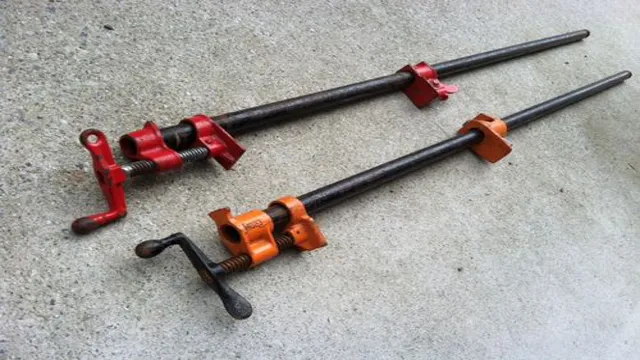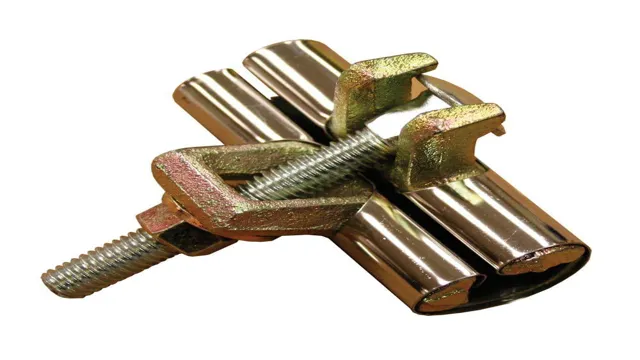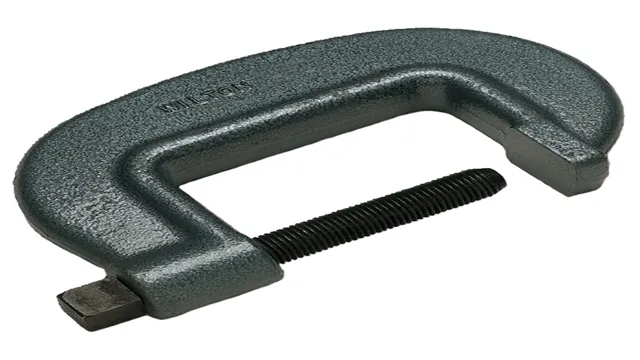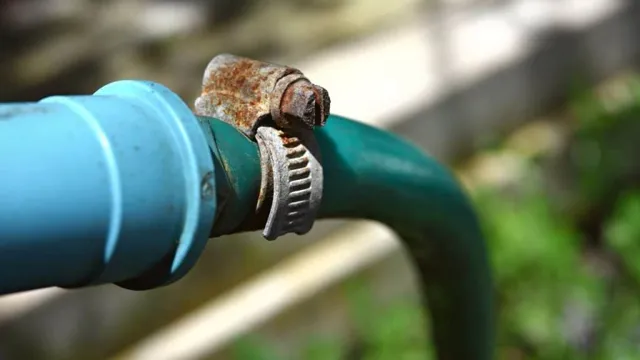How Do Current Clamps Work? A Comprehensive Guide to Understanding Their Functionality
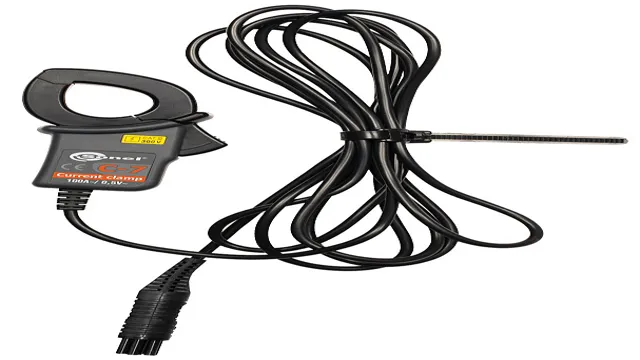
If you’re in the electronics industry, you’ve probably come across current clamps. But do you really understand how they work? Current clamps, also called amp clamps, are a vital tool in measuring current in a circuit without breaking the circuit. They work by using a magnetic field to detect the current passing through a conductor.
Think of it like a magnet hovering over a wire. As current flows through the wire, it creates a magnetic field, which the clamp can detect and measure without physically touching the wire. Understanding how current clamps work can save time and money in electrical installations and troubleshooting.
But there’s more to it than simply clamping the device onto a wire and getting a reading. Factors like magnetic fields, size of the conductor, and the range of measurement all play a role in accurate readings. In this blog, we’ll dive deeper into how current clamps work, the types of current clamps available, and tips on using them effectively.
Whether you’re an experienced electrician or just a curious DIY enthusiast, you’ll gain a better understanding of this essential tool and how it can improve your work. So, let’s get started!
What are Current Clamps?
Current clamps are electrical instruments used to measure electrical current without breaking the circuit. They work by using a magnetic field to detect the flow of current through a conductor. The clamp itself is made up of two magnetic halves that can be opened and closed around the cable or wire.
As current flows through the wire, a magnetic field is generated which is sensed by the clamp. This creates an electrical signal that is then converted into a readable form for the user. Some current clamps can also measure other electrical parameters such as voltage, resistance, and frequency.
Overall, current clamps are a simple and effective tool for measuring and monitoring electrical currents in a range of applications.
Definition of Current Clamps
Current clamps are a type of electrical measurement tool that can provide valuable insights into a circuit’s behavior. They are particularly useful for measuring the amount of current that is flowing through a wire, without the need to make any physical contact with the wire itself. This is achieved by placing the current clamp around the wire, which then creates a magnetic field that can be measured.
This measurement can be used to determine the amount of current flowing through the wire, which can be crucial when troubleshooting a circuit or planning an electrical project. Current clamps are also an important tool for electricians and other professionals who work with electrical systems regularly. By using a current clamp, they can accurately and safely measure current without the risk of electrocution or other hazards.
Overall, current clamps are an essential tool for anyone working with electrical systems and circuits, and they can provide invaluable insights into how these systems function. So, if you’re planning to work with electrical circuits, make sure you have a high-quality current clamp on hand to help you get the job done right.
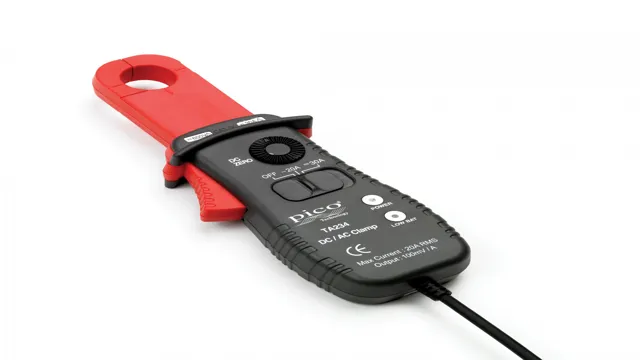
Types of Current Clamps
Current clamps are a type of measuring tool used to detect the amount of current flowing through a circuit without breaking the circuit. They work by clamping around the wire and measuring the magnetic field generated by the current passing through it. Current clamps are useful when measuring the current in a circuit where direct contact with the wire is either difficult or impossible.
There are two types of current clamps; AC and DC. AC current clamps measure the amount of alternating current, while DC current clamps measure the amount of direct current flowing through the wire. AC clamps are typically used in applications such as HVAC systems, while DC clamps are used in automotive and marine applications.
Some current clamps can be used to measure both AC and DC current. These clamps are versatile and can be used in a variety of electrical applications, including power quality analysis, automation, and load profiling. With the right current clamp, you can accurately measure the current flowing in any electrical circuit.
How Current Clamps Work
If you’re wondering how current clamps work, you’re not alone. These handy devices are used by electricians and engineers to measure electrical current without actually breaking the circuit. So, how do they do it? Essentially, current clamps work by creating a magnetic field around the wire that is being measured.
This magnetic field induces a voltage in the clamp’s sensor, which is then converted into a current measurement. The great thing about current clamps is that they allow you to measure current without having to physically touch any live wires. This makes them incredibly useful for working with high-power electrical systems or in situations where there is a risk of electrocution.
Whether you’re working as an electrician or just trying to troubleshoot a problem in your home, a current clamp is an essential tool to have in your toolkit.
Electromagnetic Induction Mechanism
Current clamps are essential tools for measuring the amount of current flowing through a conductor without interrupting the circuit. These devices work based on the principle of electromagnetic induction, where the clamp generates a magnetic field around the conductor, inducing a current. The clamp then senses the magnetic field or flux, which interacts with the conductor’s magnetic field, and calculates the current level based on that measurement.
Modern clamps employ a Hall effect sensor, which helps in accurate measurements of both AC and DC currents. Current clamps come in various sizes and ranges, and choosing one depends on the circuit’s characteristics, such as the maximum current and the conductor’s size. Current clamps have numerous applications in the electrical industry, including power quality analysis, energy audits, and motor analysis.
With their non-contact mechanism, current clamps are safe to use and provide a reliable means of monitoring current levels.
Principle of Operation
Current clamps are essential tools that are used to measure electrical current flow in a wire without having to disconnect the wire. They work by using a magnetic field to measure the current flow in the wire. The clamp has a core made of ferromagnetic material which when placed around the wire carrying current, magnetizes and creates a magnetic field around it.
The current causes the magnetic field to create a flux in the core which is directly proportional to the amount of current in the wire. The clamp then measures the flux and converts it to an electrical signal that can be read and displayed on a digital meter. The signal output allows you to accurately measure the amount of current flowing through the wire without having to disconnect the circuit, making it a valuable tool in many industries such as electronics, automotive, and energy.
Overall, current clamps operate on a simple principle of magnetic induction, which makes them a reliable and efficient option for measuring current.
Factors Affecting Accuracy
Current clamps, also known as current probes or ammeters, are used to measure the electrical current passing through a wire or circuit. They work by using the principle of induction, where an electrical signal is generated by the magnetic field produced by the current flowing through the wire. When the clamp is placed around the wire, it detects this magnetic field and produces an output signal that corresponds to the current.
However, there are several factors that can affect the accuracy of current clamps, such as the quality of the clamp itself, the amount of external noise or interference, and the frequency and waveform of the current. To ensure accurate measurements, it is important to choose a clamp that is appropriate for the range and type of current being measured, and to use appropriate calibration techniques. Additionally, it is important to minimize external noise and interference by using proper shielding and grounding techniques.
With proper use and maintenance, current clamps can provide accurate and reliable measurements of electrical current.
Applications of Current Clamps
Current clamps are a useful tool for measuring electric current in a non-invasive manner. The clamp is first opened and then placed around the conductor or cable carrying the current. The clamp then detects any fluctuations or changes in the magnetic field created by that current and converts it into a readable signal.
The benefits of using a current clamp include fewer wiring errors, quicker installation, and improved safety as it eliminates the need for direct physical contact with the wire. Current clamps are useful in a variety of applications, including measuring the current draw of an electrical appliance, monitoring solar panels or wind turbines, and even in checking the power usage of electric cars. Understanding how do current clamps work can help in creating familiarity with this tool and its capabilities in electrical measurements and testing.
Electrical Measurements
Current Clamps One of the most useful tools in electrical measurement is the current clamp. It allows for non-invasive measurement of electrical currents, making it a safer and more convenient way to take measurements. Current clamps are commonly used in a variety of applications, including monitoring the power consumption of home appliances, measuring the current output of solar panels, and even in medical applications such as monitoring heart rate.
They are also commonly used in automotive applications to diagnose issues with the electrical system. Current clamps are versatile tools that can measure both AC and DC currents, making them an essential tool for any electrician or technician. With their accuracy and ease of use, current clamps make electrical measurements more convenient and safer than ever before.
Power Quality Analysis
Power Quality Analysis If you want to measure the current flowing in a circuit without breaking the circuit, you might consider using a current clamp. These handy devices can be used to measure both AC and DC currents and can be found in various applications, including power quality analysis. Power quality analysis involves monitoring and analyzing the quality of electrical power, including voltage, frequency, and current.
By using current clamps, engineers can measure and analyze the various harmonics present in the circuit, which can help them identify problems such as power surges or harmonic distortion. Current clamps come in various sizes, with some models even capable of measuring currents up to several thousand amps. When properly used, current clamps provide an accurate and non-invasive method of measuring current flow, making them an essential tool for power quality analysis.
Advantages and Limitations of Current Clamps
If you’re wondering how do current clamps work, there are a few things you should know. Current clamps are used in electrical and electronic engineering to measure the flow of current in a circuit. They work by using a magnetic field to detect the current flowing through a wire.
One of the main advantages of current clamps is that they are non-invasive, meaning you don’t need to disconnect any wires to take a measurement. They are also very accurate and can be used to measure both AC and DC currents. However, there are some limitations to current clamps.
They are typically restricted to measuring low to moderate currents and they can’t measure currents in circuits that are shielded from magnetic fields. Additionally, the accuracy of the measurement can be affected by the position and orientation of the clamp. Overall, current clamps are a useful tool for measuring current flow in a non-invasive and accurate way, but they do have some limitations that should be taken into account.
Pros of Current Clamps
Current clamps have become an integral tool for electricians and other professionals in the electrical industry. They offer numerous advantages such as non-intrusive measurements, high accuracy, and fast response time compared to other conventional methods. Non-intrusive measurements make it easy to measure current flow in circuits without interrupting or altering the functioning of the circuit.
On the other hand, high accuracy helps electricians detect faults and malfunctions in electrical systems, making it easy to diagnose and fix the problem. Fast response time is particularly useful in measuring vital parameters like peak current, frequency, and pulse width. Furthermore, modern current clamps come with additional features like data logging and wireless connectivity, which enhances their functionality.
Despite these advantages, current clamps also have limitations that users need to be aware of, such as their inability to measure both AC and DC current flow and limitations in measuring high voltages. Nonetheless, current clamps provide a reliable, flexible, and user-friendly solution for measuring current flow in a range of applications.
Cons of Current Clamps
Current clamps can be very useful tools for measuring electrical currents in a non-invasive manner. However, there are also some disadvantages to using them. One major limitation is that they can only measure AC currents, which means that they are not suitable for measuring DC currents.
Additionally, current clamps may also have a limited frequency range and accuracy, and they can be affected by other nearby electrical fields. Despite these limitations, current clamps still offer many advantages. For example, they are very convenient to use since they do not require you to break any electrical circuits or make direct contact with any live wires.
Furthermore, they are also very safe to use since they are designed to provide galvanic isolation between the current being measured and the user. Overall, it is important to weigh the advantages and limitations of current clamps when deciding whether or not to use them for your electrical measurements.
Conclusion
Current clamps are like a superhero’s tool, silently measuring the electrical currents without the need of breaking circuits or taking physical measurements. They use the power of magnetism to detect the magnetic field generated by the current flowing through a conductor. Like a silent observer, the current clamp reports back to its user with accurate and precise measurements of the current.
In summary, current clamps make measuring electrical currents a breeze, which is why they have become an indispensable tool for every electrician and engineer out there.”
FAQs
What is a current clamp and what is it used for?
A current clamp is a device used to measure electrical current without needing to disconnect wires. They work by clamping around a wire and detecting the magnetic field generated by the current flowing through the wire.
How does a current clamp measure electric current?
Current clamps work by measuring the magnetic field generated by the electric current flowing through a wire. This magnetic field generates a voltage in the clamp’s sensing coil, which is then used to determine the current value.
Can a current clamp be used to measure both AC and DC current?
Yes, current clamps can be used to measure both AC and DC current. However, the measurement range and accuracy may differ depending on the type of current being measured.
What are the advantages of using a current clamp over traditional current measurement methods?
Current clamps provide a non-intrusive method of measuring current, meaning that there is no need to break the circuit or disconnect any wires. This can save time and reduce the risk of injury. Additionally, current clamps are often more accurate and provide a wider measurement range than traditional methods.
Are there any limitations to using a current clamp?
Yes, current clamps may have limitations on the maximum current they can measure, as well as the size of wire they can accommodate. Additionally, some current clamps may be sensitive to noise or interference, which can affect the accuracy of the readings.
Can a current clamp be used in conjunction with other measuring instruments?
Yes, current clamps can be used with other measuring instruments, such as multimeters, oscilloscopes, and data loggers. This allows for more detailed analysis and measurement of electrical systems.
What industries and applications commonly use current clamps?
Current clamps are commonly used in electrical maintenance, automotive repair, HVAC, and power quality analysis. They are also used in research and development, as well as in educational settings.

